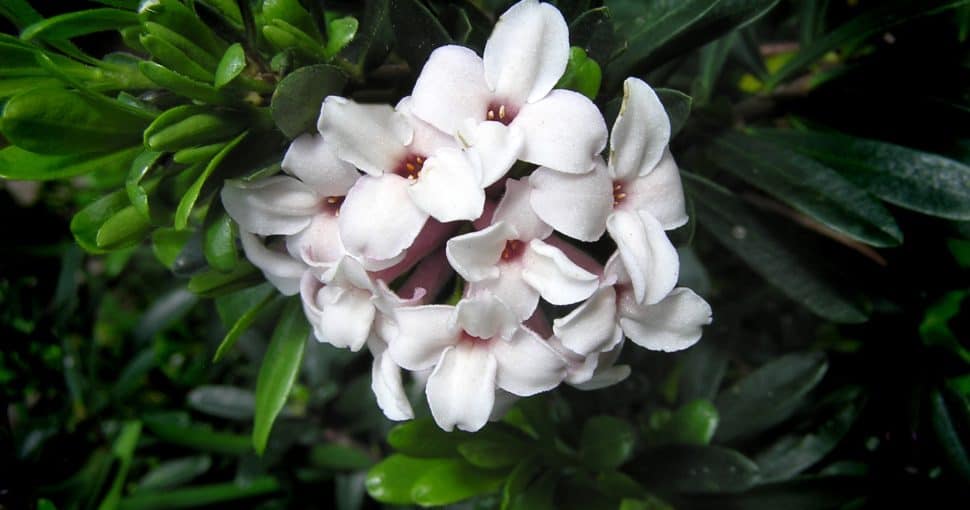Accidental poisonings by toxic plants throughout the United States are extremely common, estimated to be about 2 million every year. Many of these accidental poisonings happen in the state of Missouri. There are various types of poisonous plants that you or anyone else can encounter when traversing through natural landscapes.
Contents
- 1. Oleander (Nerium Oleander)
- 2. Foxgloves (Digitalis)
- 3. Water Hemlock (Cicuta)
- 4. Rosary Pea (Abrus Precatorius)
- 5. Belladonna/Deadly Nightshade (Atropa Belladonna)
- 6. Castor Bean (Ricinus Communis)
- 7. English Yew (Taxus Baccata)
- 8. White Snakeroot (Ageratina Altissima)
- 9. Wolf’s Bane/Monkshood (Aconitum)
- 10. Poison Ivy (Toxicodendron Radicans)
- 11. Corncockle (Agrostemma Githago)
- 12. White Mustard (Sinapis Alba)
- 13. Lily of the Valley (Convallaria Majalis)
- 14. Sweet clover (Melilotus)
- 15. Soapwort (Saponaria Officinalis)
- 16. Pennycress (Thlaspi Arvense)
- 17. Poison Oak (Toxicodendron Diversilobum)
- 18. Bird of Paradise (Strelitzia)
- 19. Daphne (Daphne)
These plants can have different effects on people and animals, some more severe than others. Therefore, any plant that is injurious to animals and human beings is deemed poisonous. So, some plants may result in skin reactions, such as rashes, while others can even be lethal if ingested in high dosages.
So, it’s important to know what these plants are so that you can tell whether it’s safe or not the next time you go on a walking trail. It’s also useful if you typically go into the woods or other natural areas with your dog or other pet. Even coming into physical contact with some plants can be dangerous to your health and that of your pet.
This article, therefore, highlights 19 poisonous plants in Missouri so that you’re educated on this topic. It mentions the names and characteristics of these plants, and it also explains the effects and symptoms of some.
1. Oleander (Nerium Oleander)
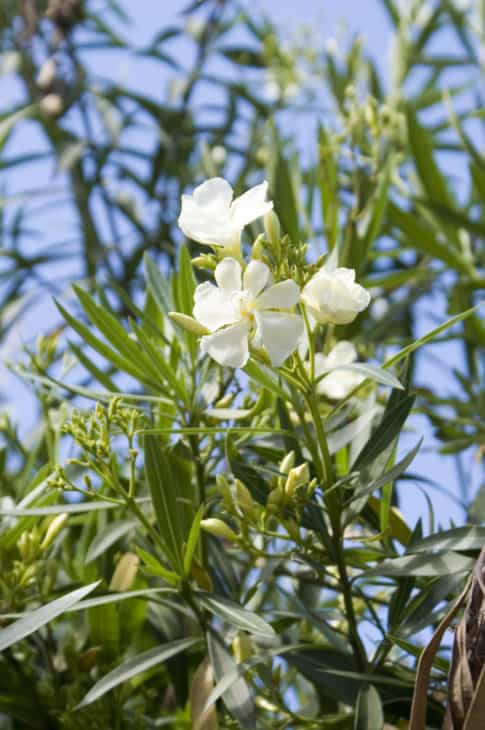
Oleander is a shrub or small tree that reaches a maximum height of about 10 feet. It has dark-green leaves with various types of flowers in different colors, including yellow, white, red, or pink. The entire plant is known for being very toxic to plants and animals. However, ingesting the branches, leaves, or stems is even more dangerous. Burning it also releases toxic fumes.
2. Foxgloves (Digitalis)
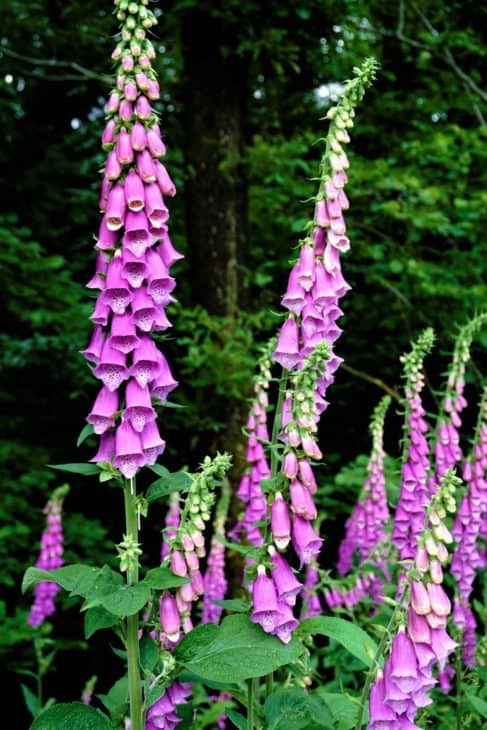
A foxglove plant is toxic to both people and animals. You can identify one through its 3 inches long drooping, tubular flowers. The colors of the flowers on this plant vary, as some are yellow, white, pink, and rose. However, all of them have spots in each tube. Coming into contact with this plant could lead to symptoms that include headaches, weakness, diarrhea, nausea, abdominal pain, blurred vision, or rashes.
3. Water Hemlock (Cicuta)
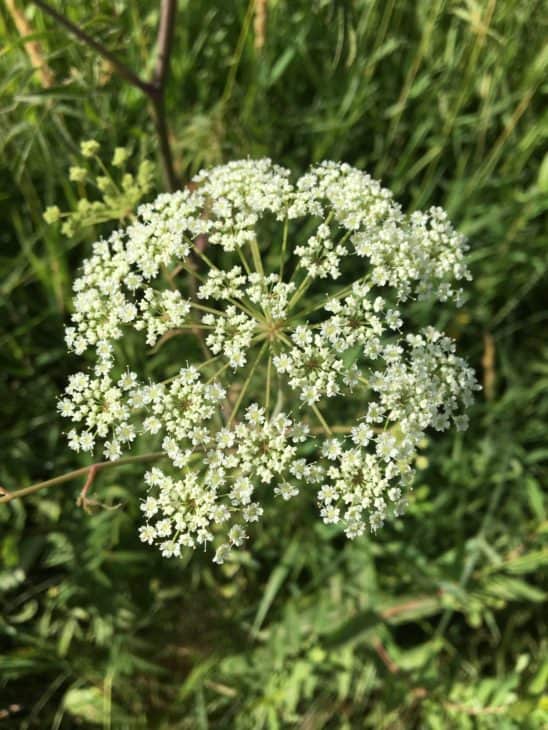
The water hemlock plant has hollow stems that reach a height of 6 feet. These stems look a lot like bamboos, but they are purple or red striped. Ingesting any part of this plant, especially the roots and seeds, are extremely toxic. Water hemlocks are typically present in wet or moist areas like areas near swamps or wetlands or the banks of streams.
4. Rosary Pea (Abrus Precatorius)
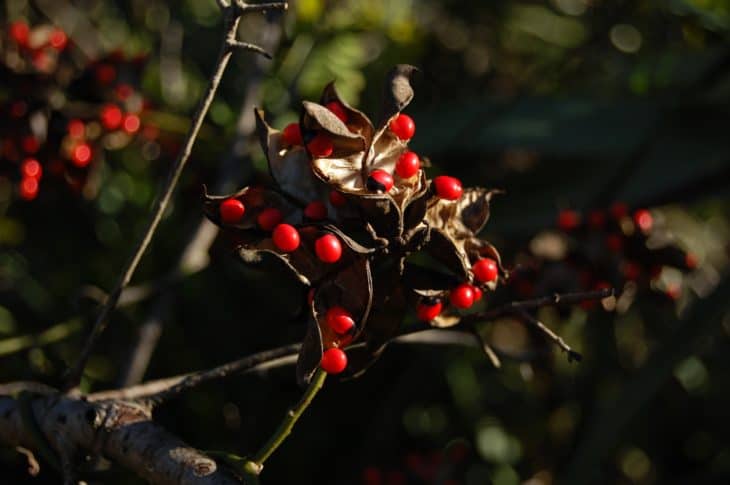
Rosary pea, also known as jequirity bean, is a perennial plant with leaves that twine around the trees. The seeds are usually red and shiny with black spots on them. The entire plant is toxic to humans and animals. Ingesting these seeds could lead to nausea, diarrhea, vomiting, and abdominal pain, which can also turn bloody. Some extreme symptoms also include hallucinations, seizures, and organ failure.
5. Belladonna/Deadly Nightshade (Atropa Belladonna)
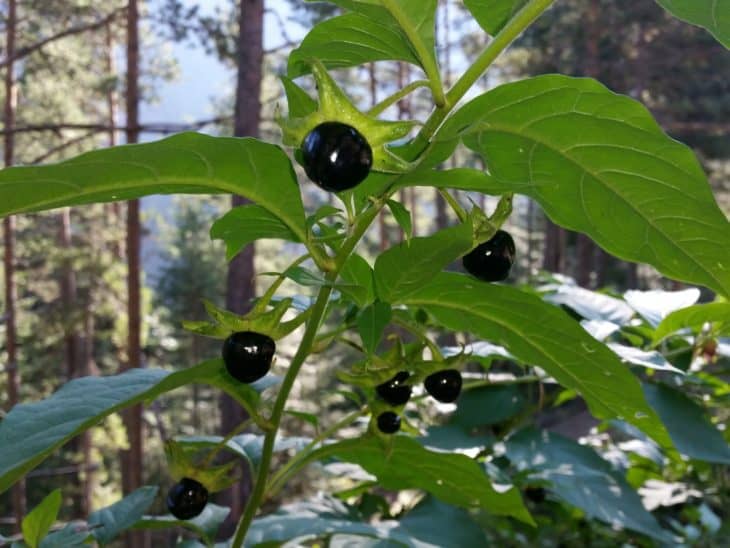
One unique characteristic of the belladonna/deadly nightshade is its distinctive foul smell. In addition to that, you can also identify it by its fruit and flowers. It has oblong and bright red berry-like fruits and purple and yellow flowers. This plant is typically found in woodlands or other shady areas. Do not let your pet eat any part of the plant as it may result in elevated pulse rates or even paralysis.
6. Castor Bean (Ricinus Communis)
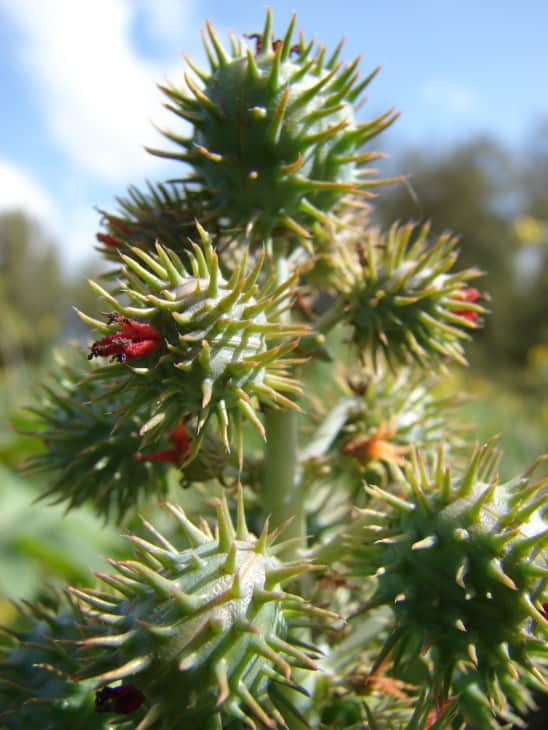
The bean-like shape of its fruit gives the castor bean plant its name. It’s also called the castor oil plant. You can find these fruits in clusters at the top of the castor bean plant. The entire plant is deadly to humans and animals, but the seeds are especially dangerous. Eating two seeds can kill you.
7. English Yew (Taxus Baccata)
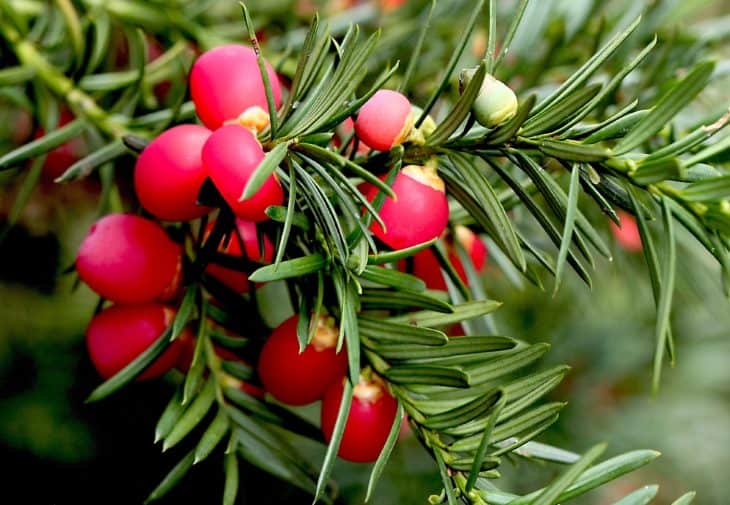
English yew, also known as European Yew, is an evergreen tree that grows to about a maximum height of 100 feet. The entire plant, other than the fleshy part that covers the seeds, is toxic to humans and animals. You or your pet must get immediate medical attention if you or it accidentally ingests any part of the plant.
8. White Snakeroot (Ageratina Altissima)
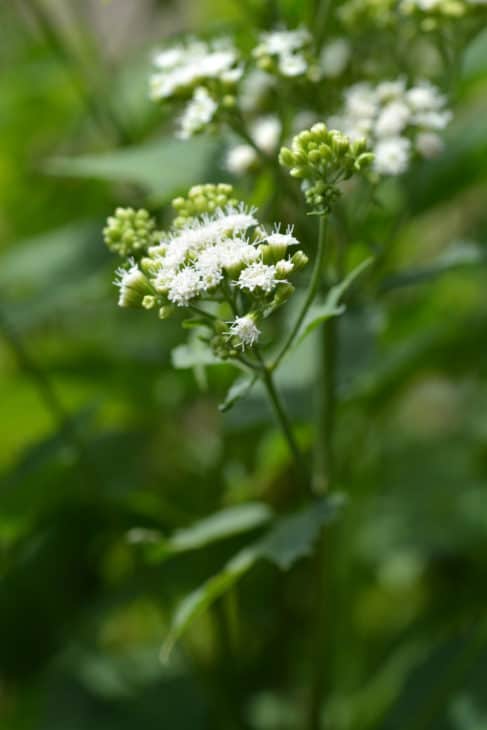
The Ageratina Altissima plant goes by many names, including white snakeroot, white sanicle, and richweed. This perennial plant grows to a maximum height of about 5 feet, and it has clean, white flowers. You can find this plant in the woods and other shady areas. Poisoning by this plant is most common among cattle, and people may experience the symptoms by consuming affected cattle’s milk.
9. Wolf’s Bane/Monkshood (Aconitum)
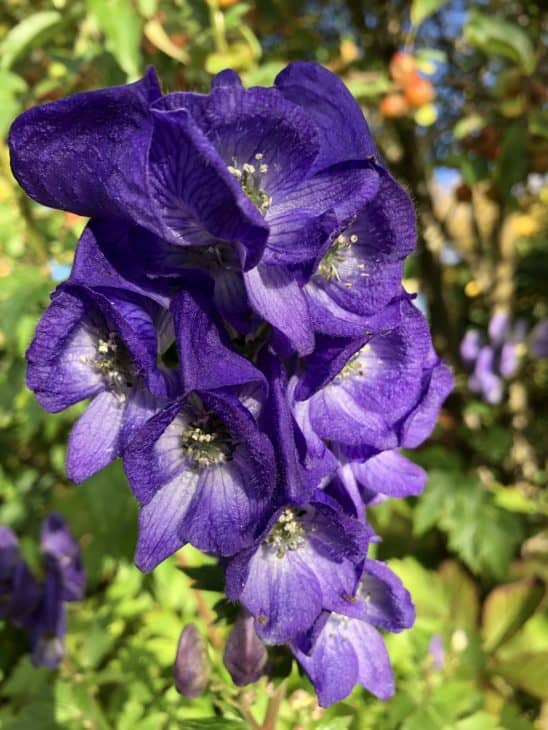
Wolf’s bane and monkshood are two commons names for the Aconitum plant. This perennial plant has stems that grow to a maximum height of about 4 feet. Moreover, its purple-blue flowers situated on the stem in terminal panicles give it its distinctive appearance. The plant is toxic, but it’s not fatal if you accidentally brush against it or ingest some.
10. Poison Ivy (Toxicodendron Radicans)
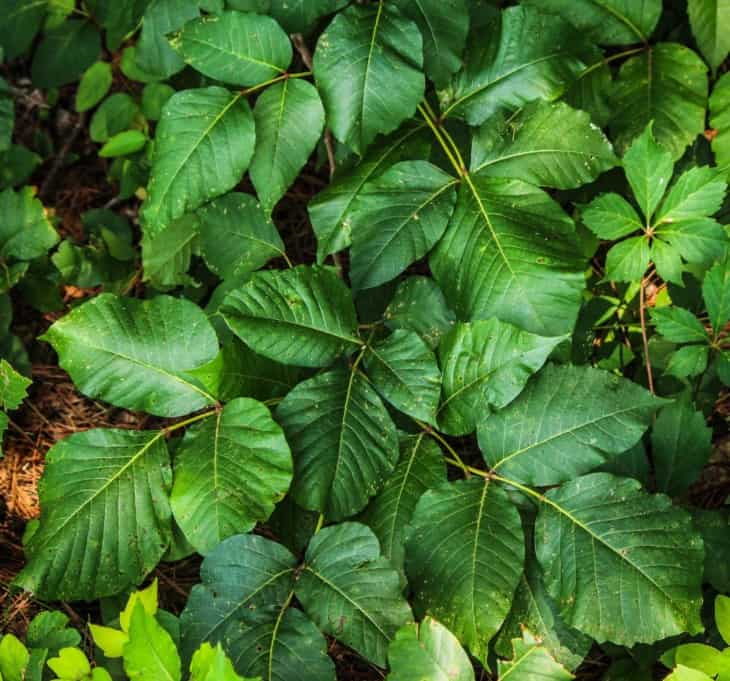
The poison ivy plant’s leaves are non-lobed, smooth, and serrated at the edges. This plant can be mixed up with poison oak, and both of them can lead to severe dermatitis if you come into physical contact with the plant. Also, in addition to staying away from it, don’t use it as firewood because it may release toxic gases when burned.
11. Corncockle (Agrostemma Githago)
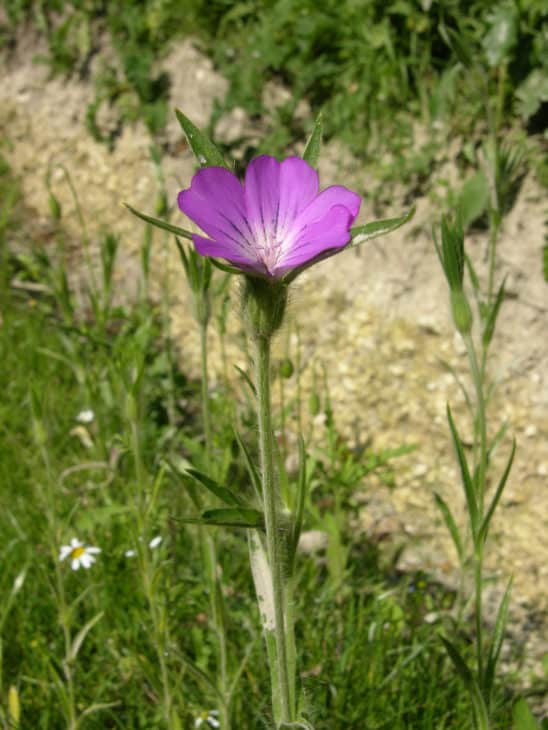
Corncockle is an herbaceous annual weed, meaning it grows and sprouts in spring and dies before winter begins. It only grows to about a little under 2.5 feet in height, and it has opposite leaves and hairy stems. The seeds are the most toxic part of the plant. Ingesting them could lead to symptoms such as dizziness, diarrhea, vomiting, abdominal pain, rapid breathing, and a coma (in extreme cases).
12. White Mustard (Sinapis Alba)
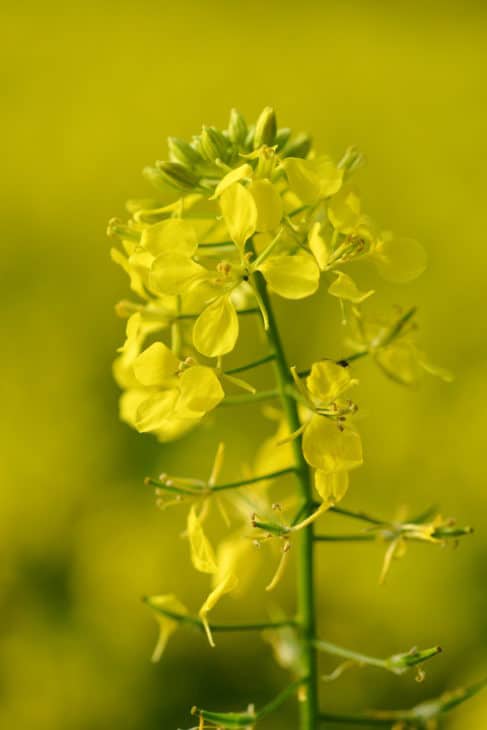
White Mustard is also a herbaceous annual plant. It only grows to about a maximum height of about 2 feet, and the entire plant is hairy and bristly. The entire plant is poisonous. Stay away from the plant as it may lead to symptoms such as stomach flu, diarrhea, salivation, mouth irritation, difficulty breathing, and paralysis of the lungs and heart (in extreme cases).
13. Lily of the Valley (Convallaria Majalis)
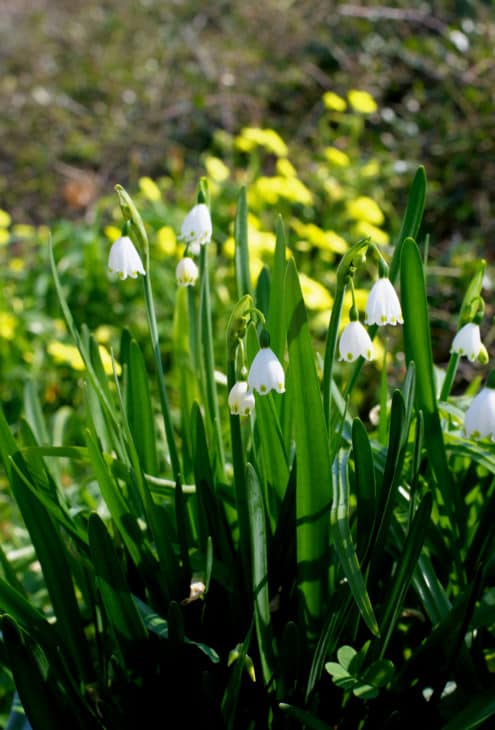
The flowering plant lily of the valley has white flowers shaped like bells. These flowers have a sweet smell, which may cause people to get near them. Coming into contact with the plant and its flowers may not have any negative effects in many cases, but it can be toxic if ingested by certain animals and human beings.
Alternatives: 9 Plants That Look Like Lily of the Valley
14. Sweet clover (Melilotus)
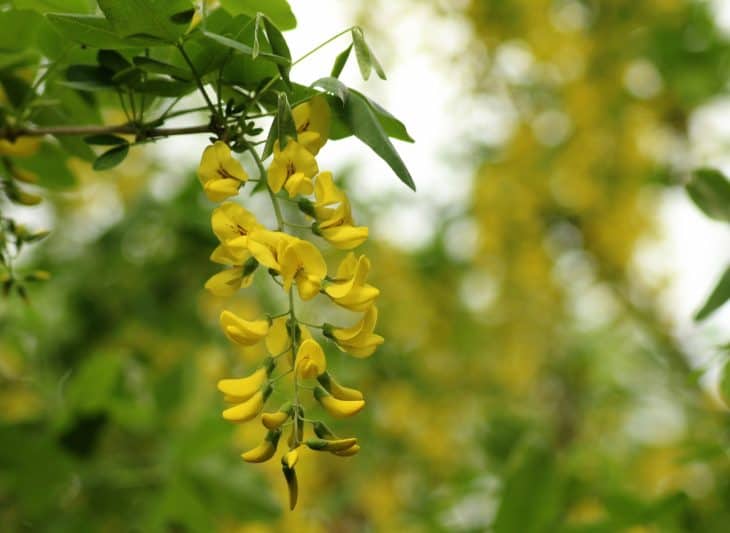
Sweet clover is a herbaceous biennial plant. It grows to about a maximum height of about a little under 5 feet, and it has compound leaves with three leaflets. The entire plant is poisonous. Don’t get close to the sweet clover plant as it may lead to severe symptoms such as low body temperature, strong heartbeat, pockets of blood under the skin, and internal bleeding.
15. Soapwort (Saponaria Officinalis)
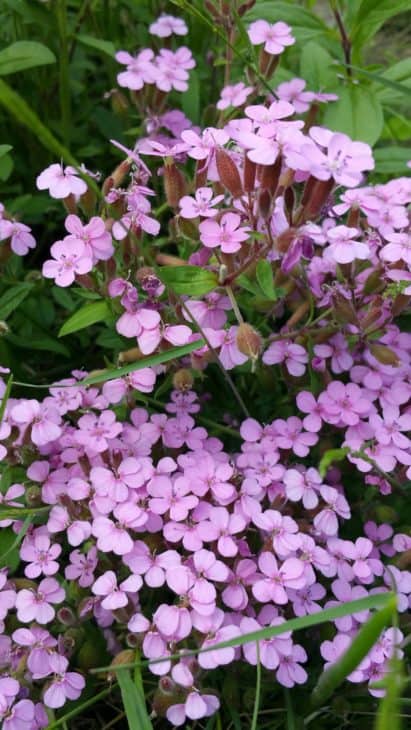
Soapwort is also a perennial plant that grows to about a maximum height of about a little over 2.5 feet. It has white or pink flowers and opposite leaves. The seeds are the most toxic part of the plant. Ingesting them could lead to symptoms such as unsteadiness, diarrhea, vomiting, irritation in the digestive system, rapid breathing, and a coma (in extreme cases).
16. Pennycress (Thlaspi Arvense)
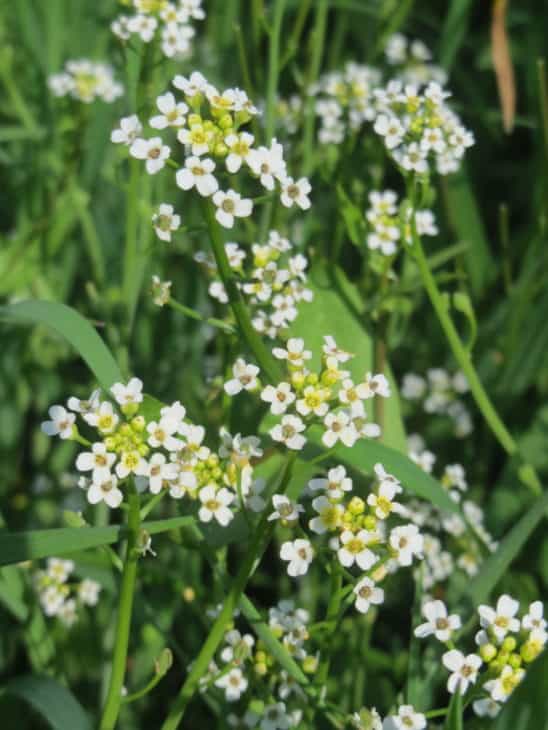
Pennycress is also an annual plant, and it grows to about a maximum height of about a little under 2 feet with alternate leaves. The seeds are the most toxic part of the plant. Ingesting them could lead to severe symptoms such as colic (abdominal pain), diarrhea with bloody feces, gastric distress, and paralysis of the respiratory system and heart (in extreme cases).
17. Poison Oak (Toxicodendron Diversilobum)
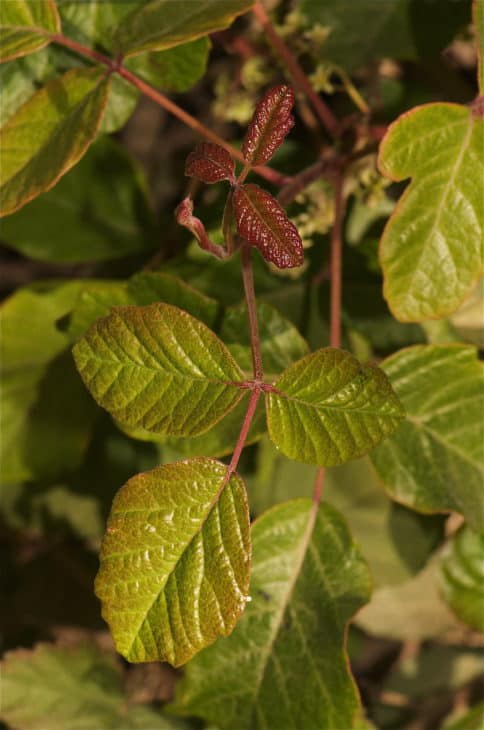
As mentioned above, poison oak can be mistaken for ivy. Both plants look like bushes when mature, but the appearance of the leaves is what sets them apart. You are also likely to find waxy berries on poison oak. The berries’ colors can vary based on their maturity, in which they may range from yellow to gray or green to white.
18. Bird of Paradise (Strelitzia)
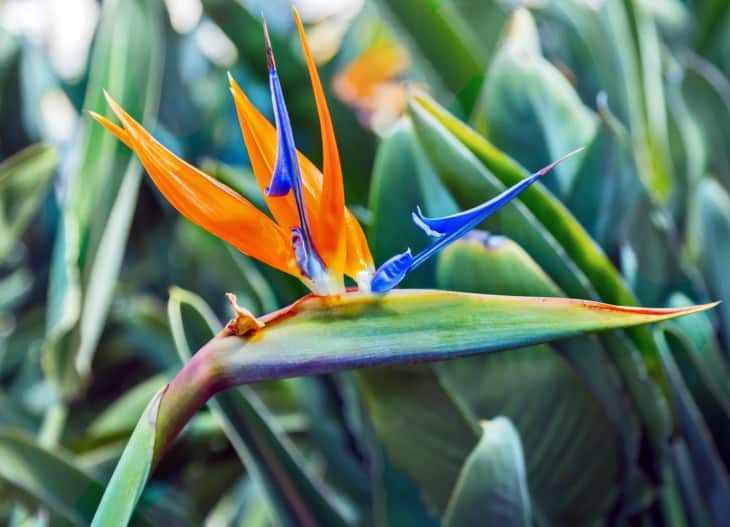
The bird of paradise plant is a perennial plant that is also grown as a houseplant. The plant’s leaves also form a crown of foliage that looks like a fan. The plant is toxic to people and animals, including cats and dogs, so don’t let your pets near it. Ingesting the seeds or flowers of this plant could lead to symptoms such as drowsiness, diarrhea, vomiting, and dizziness among people. You might want to find a plant that looks like bird of paradise as an alternative.
19. Daphne (Daphne)
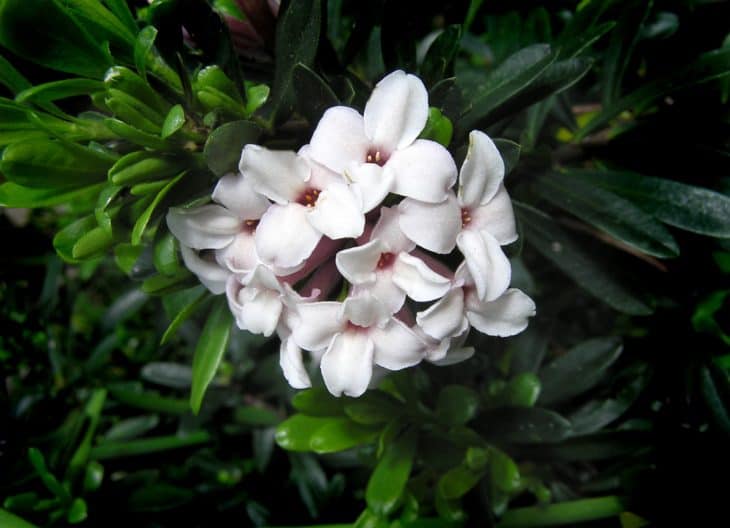
Daphne is a genus of plants with several different varieties. Some are more toxic than others, so it’s best to stay clear of any type of this plant. Considering the symptoms vary, they can be either rashes, eczema, or even choking sensations. These shrubs grow to about 5 feet in height and have upright stems. They also have flowers in clusters.

